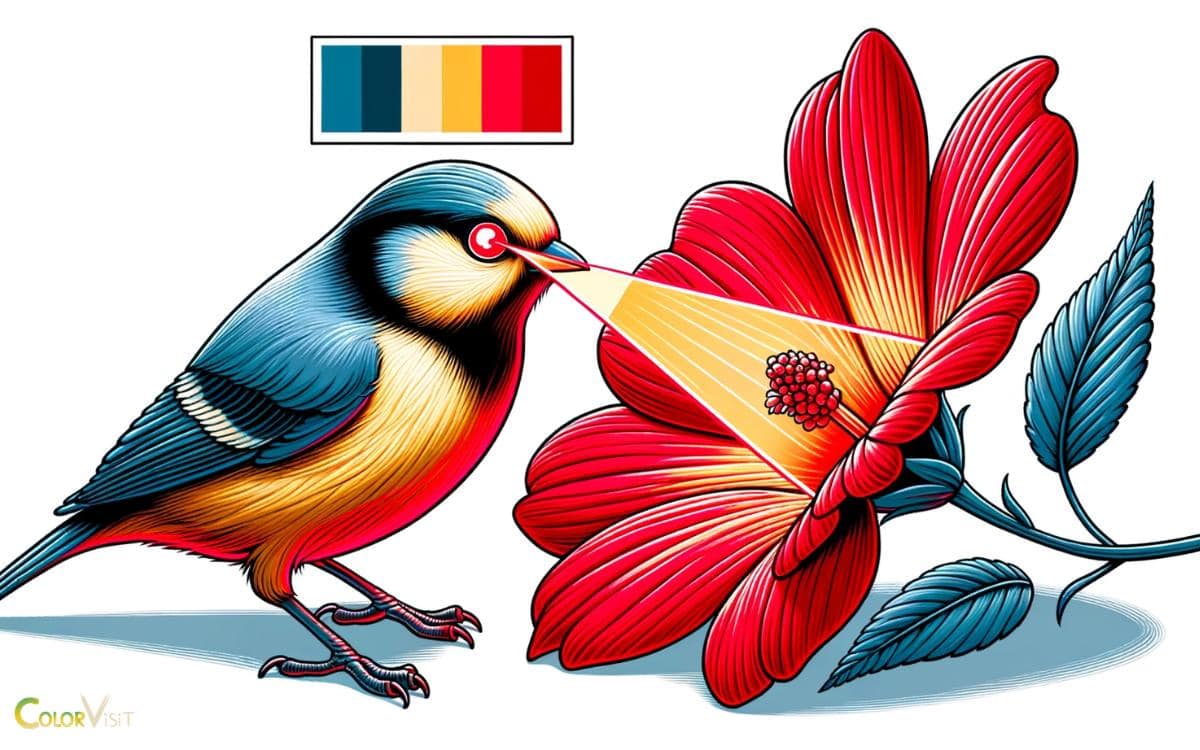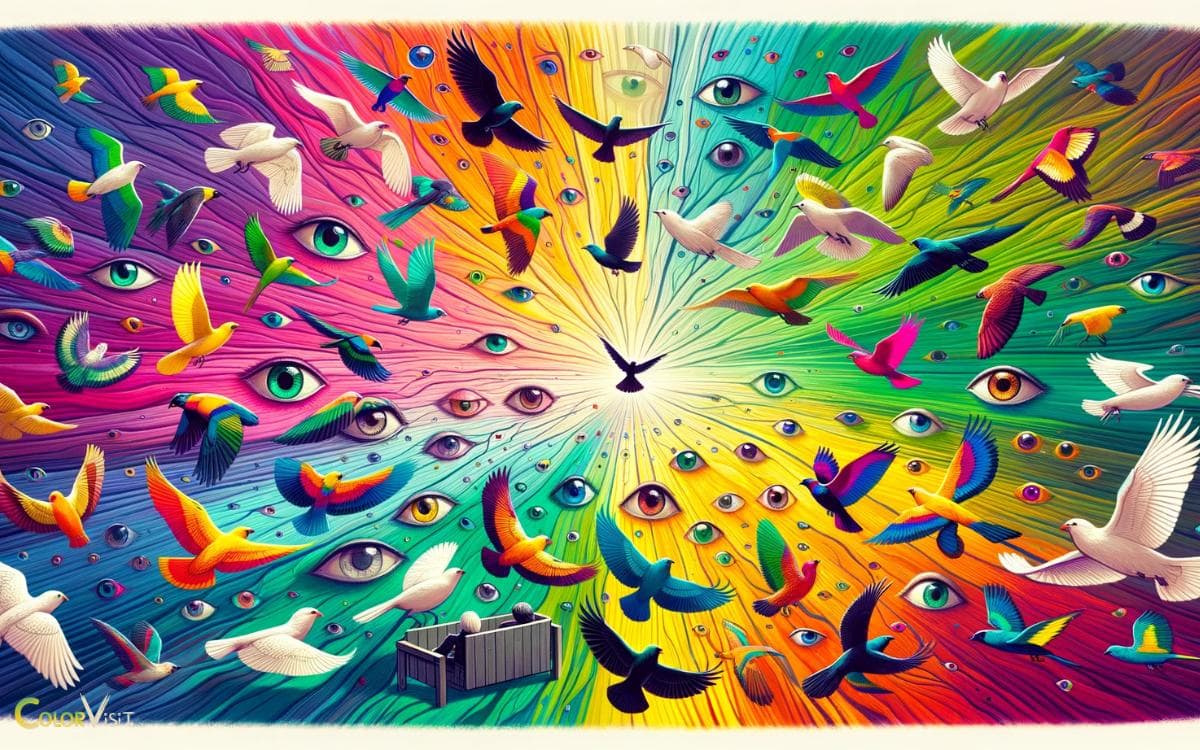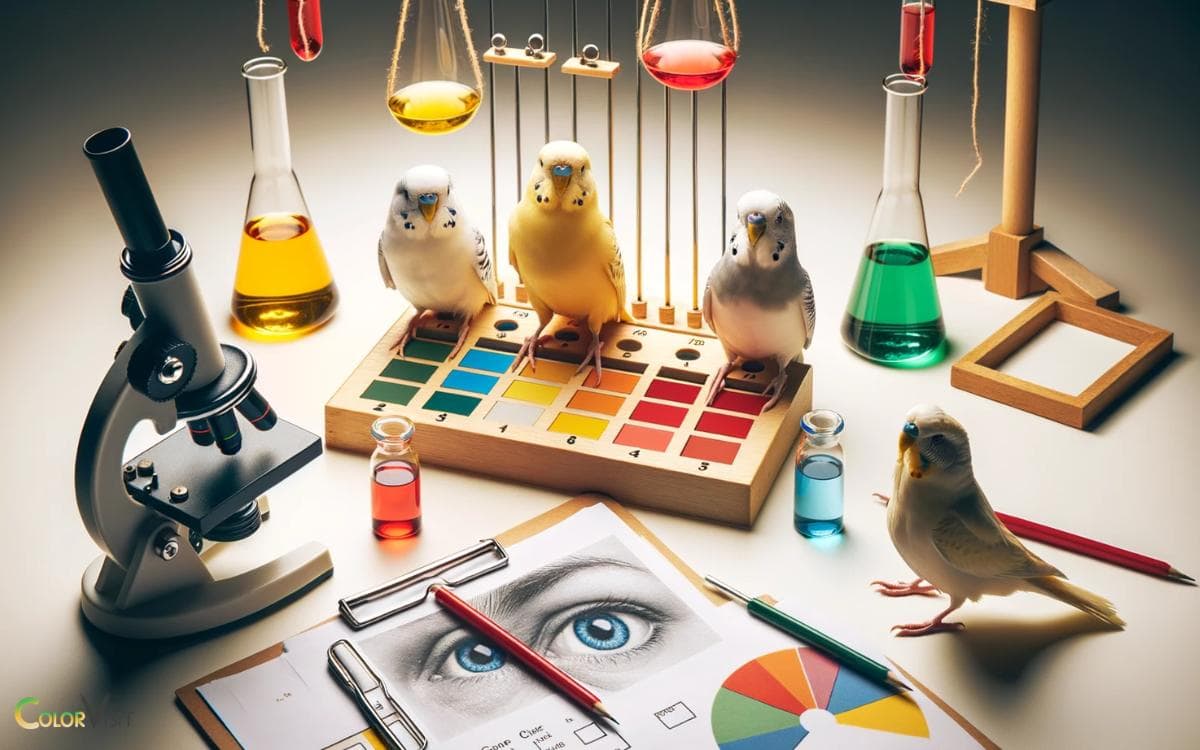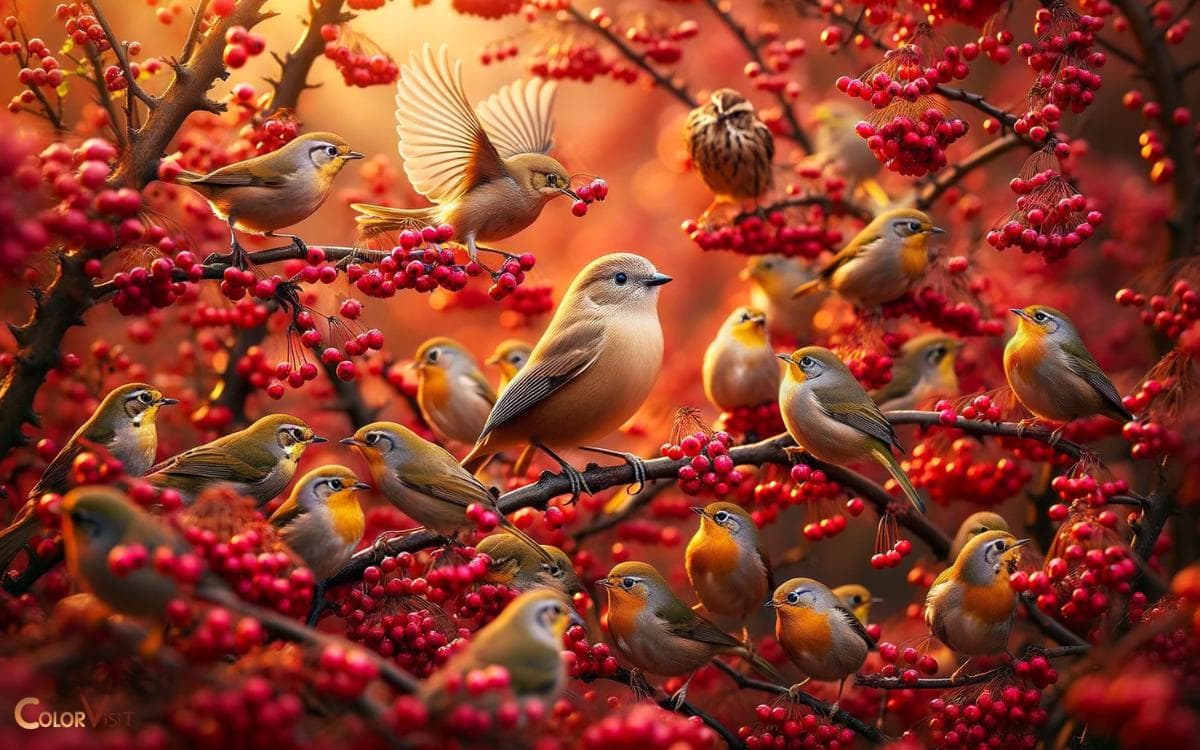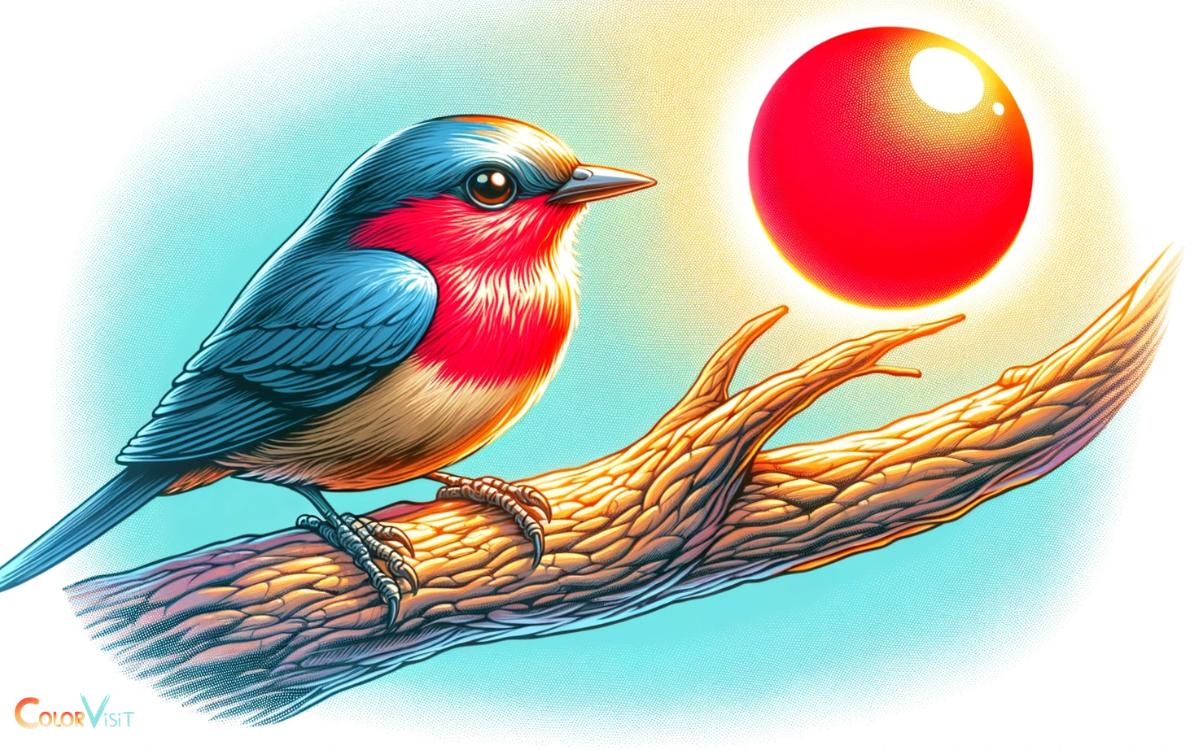Can Birds See the Color Red? Yes!
Yes, birds can see the color red. Unlike humans, birds have a fourth color receptor in their eyes that enables them to see a wider spectrum of light, including ultraviolet light and the color red.
Birds’ visual capabilities are truly remarkable, providing them with a world of color and perception that differs from our own.
Their ability to see UV light and a wider range of hues adds a whole new dimension to their lives.
Birds are fascinating creatures with incredible visual abilities. They perceive colors differently than humans do, thanks to their unique adaptations in their eyes.
Key Takeaway
The Visual Spectrum Of Birds
Birds have a unique visual spectrum, but can they see the color red? Discover how birds perceive colors and if red is indeed part of their vibrant world.
We will explore how birds perceive colors, the differences between bird and human vision, and the amazing adaptations in bird eyes.
How Birds Perceive Colors?
- Birds have an expanded visual spectrum compared to humans, allowing them to see ultraviolet (UV) light. This means they can see colors that are invisible to us.
- They have specialized photoreceptor cells called cones in their eyes, just like humans. However, birds have more types of cones, including UV-sensitive ones, enabling them to perceive a wider range of colors.
- Birds can also see polarized light, which helps them orient themselves and navigate using the sun’s rays.
Differences In Bird Vision Compared To Humans:
- Birds have tetrachromatic vision, which means they have four types of cones, whereas humans have trichromatic vision with only three types of cones. This extra cone type allows birds to see a more extensive range of colors.
- The ability to see UV light provides birds with unique advantages, such as identifying ripe fruits and berries, locating nectar-rich flowers, and detecting UV patterns on potential mates or rivals.
- Some studies suggest that birds may use UV vision to navigate during migration, as UV light penetrates through haze and fog better than other wavelengths.
Unique Adaptations In Bird Eyes:
- Birds’ eyes are larger in proportion to their body size compared to humans. This larger eye size allows for enhanced visual acuity and the capture of more light.
- Many bird species have a colored ring of tissue called the “iris pad” surrounding their pupils, which may help control the amount of light entering the eye and improve focusing abilities.
- Some bird species possess a specialized tissue called the “tetrachromatic oil droplets” that filters light entering the cones, further enhancing color discrimination.
Understanding Color Perception In Birds
Dive into the intriguing world of bird vision and uncover the answer to this captivating question.
Birds have remarkable visual capabilities that differ significantly from those of humans. One aspect of avian visual perception that has intrigued researchers is their ability to perceive colors, including the color red.
Bird Cones And Color Sensitivity
Birds possess special color-detecting cells called cones in their retinas, just like humans. However, the number and types of cones differ between birds and humans, resulting in variations in color perception.
Here are some key points to consider:
- Avian cones are categorized into four types, while humans have three cones responsible for color perception Red, green, and blue.
- The fourth cone type in birds is sensitive to ultraviolet (UV) light, allowing them to see beyond the visible spectrum that humans perceive.
- Birds’ ability to see UV light expands the range of colors they can detect, giving them a more vibrant and detailed view of the world around them.
The Capability Of Birds To See Ultraviolet Light
Birds have a remarkable advantage over us when it comes to perceiving UV light.
Here’s why:
- Many objects, such as flowers and fruits, have UV patterns that are invisible to humans but easily detectable to birds. These patterns help birds identify ripe or nutritious food sources.
- Birds’ ability to see UV light allows them to spot the ultraviolet reflectance on feathers and plumage. This plays a crucial role in courtship displays, helping them attract mates and establish social hierarchies.
How Birds Differentiate Between Colors?
While birds have a wider range of color perception due to their extra cone type, they still face the challenge of discerning various hues.
Here’s how they manage to differentiate between colors:
- Birds primarily rely on subtle visual cues such as color saturation and brightness to distinguish between similar hues.
- Some species of birds may also exhibit different sensitivities to particular colors based on their ecological adaptations. For example, species living in forested habitats might have better red color discrimination to locate ripe fruits or spot.
Birds possess a unique visual system that enables them to perceive colors, including the color red, in ways humans cannot fully comprehend.
Their additional cone type and capability to see UV light give them a remarkable advantage in both survival and social interactions.
Can Birds Distinguish The Color Red?
Birds have the ability to distinguish the color red, as their vision allows them to perceive a wide range of colors.
They can visually detect red hues due to the presence of specialized color receptors in their eyes.
Birds, in particular, are often associated with their ability to display an array of stunning hues. But can birds actually see the color red?
Experiment-Based Evidence Of Birds Recognizing Red:
- Studies have shown that many bird species can indeed distinguish the color red.
- Experiments involving food preferences have revealed that birds tend to choose red-colored food sources over other colors.
- This suggests that birds have a visual sensitivity to red and use it as a cue for locating food.
- Red flowers, fruits, and insects may also capture the attention of birds due to their vibrant coloration.
Implications Of Red Perception For Bird Behavior:
- The ability to perceive red can play a significant role in various aspects of bird behavior, including foraging and mate selection.
- Birds that can detect red may have an advantage in finding ripe fruits or identifying nutritious insects against a green background.
- Red plumage in male birds, such as cardinals and scarlet tanagers, may serve as a signal of attractiveness to potential mates.
- Certain bird species might use red as a warning signal to communicate danger or territorial boundaries.
Factors That May Affect Bird Perception Of Red:
- Light conditions: The intensity and quality of light can influence how birds perceive colors, including red. Different lighting conditions may alter the way birds see and interpret red hues.
- Distance: Birds’ ability to perceive colors, including red, may vary depending on the distance between the object and the bird.
- Background color: The contrast between the color red and its surrounding background can affect how easily birds detect and recognize this hue.
As we unravel the mysteries of avian perception, it becomes clear that birds not only appreciate the color red but also utilize it in various aspects of their lives.
The Role Of Red In Bird Communication
Birds have the ability to perceive the color red, which plays a significant role in their communication.
Understanding how birds see and interpret this color provides valuable insights into their behaviors and interactions with their environment.
Red As A Signal Of Dominance
- Red plumage: Many bird species display red plumage as a sign of dominance. This vibrant color catches the attention of both potential mates and competitors, serving as a bold declaration of power.
- Posturing and displays: Birds with red plumage often accompany their vibrant appearance with aggressive posturing. By adopting high-stature positions and engaging in dominant behaviors, they establish their authority within their social hierarchy.
- Intimidation: The striking red hue can act as a visual deterrent, sending a clear message to rivals and competitors. This signal helps birds establish and maintain their dominance, minimizing the need for physical confrontation.
Red In Attracting Prey Or Defending Territory
Hunting advantage
Some bird species, such as hawks and falcons, utilize the color red to their advantage when hunting.
The natural camouflage provided by their red plumage enables them to blend seamlessly into their surroundings, making it easier to approach their unsuspecting prey.
Warning signals
Red can serve as a vermilion flag, signaling potential prey that danger is near.
Birds of prey may use their red markings to intimidate and startle their prey, increasing their chances of a successful capture.
Defending territory
Birds may display red plumage or use red objects to mark and defend their territory, deterring intruders and alerting others to their presence.
With their intricate communication methods, birds use the color red to convey dominance, attract mates, and defend their territory.
The vibrancy and significance of this color in the avian world are undeniable, adding a captivating element to their already fascinating behaviors and interactions.
Red In The Natural Environment Of Birds
Birds have the ability to perceive the color red in their natural environment. Their eyes are sensitive to a wide range of colors, allowing them to detect this vibrant hue. This ability plays a crucial role in their visual perception and behavior.
Birds have a remarkable ability to perceive colors, and while they may not see the color red as vibrantly as humans do, it still holds significance in their natural habitats.
Natural Occurrences Of Red In Bird Habitats:
Red feathers
Some bird species, such as the Northern Cardinal and the Scarlet Macaw, boast stunning red plumage.
These vibrant feathers not only enhance the beauty of the birds but also play a role in their mating rituals, signaling health and vitality.
Red beaks and legs
The color red can also be found in the beaks and legs of many bird species.
These areas often display bright red hues, serving as visual cues and indicators of good health and fitness.
Red Flowers And Fruits As Attractants For Birds:
- Red blossoms: A variety of flowering plants, such as the Bee Balm and the Cardinal Flower, produce vibrant red blossoms. These flowers have coevolved with birds, enticing them to visit and assist in pollination.
- Red fruits: Birds also rely on red-colored fruits as a food source. The bright red hues of berries and other fruits are an excellent visual cue that indicates ripeness and nutritional value.
Red As A Camouflage Strategy For Birds:
Background matching
Some bird species living in dense forested areas have evolved red plumage to blend in with their environment.
The red color helps them blend seamlessly with the reddish-brown hues of the forest floor, making it easier for them to evade predators and hunt for prey undetected.
Counter-shading
Certain bird species that inhabit open grasslands or coastal areas utilize a counter-shading technique.
- For example, flamingos have pinkish-red legs that act as a form of camouflage. When they wade in shallow waters, the red hue helps to conceal their presence against the aquatic vegetation.
- While the perception of red may differ between birds and humans, there is no denying its significance in the natural environment of birds.
Whether attracting mates, finding food, or disguising themselves from predators, the color red plays a vital role in the lives of these fascinating creatures.
Conclusion
Birds possess remarkable visual abilities that allow them to perceive a wide spectrum of colors.
While they do have certain limitations in distinguishing specific shades, they can indeed see the color red, although it may appear different to them compared to humans.
Through their unique visual adaptations, including specialized color receptors and plumage, birds are able to navigate their surroundings, identify food sources, and communicate with other members of their species.
